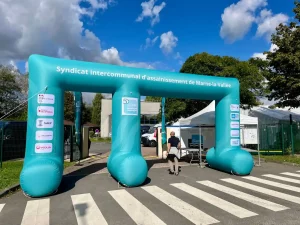Transfer lift systems play a crucial role in shaping modern living spaces, enhancing safety, weight capacity, and technological integration. These systems, including overhead, mobile, wall-mounted, and standalone models, offer flexibility and independence for efficient vertical movement within homes. Motorized lifting mechanisms, supportive slings, and user-friendly controls ensure safe transfers and improved quality of life. Consider user needs, functionality, and engagement when selecting and installing these systems to boost accessibility and home integration. Explore the types of transfer lift systems on modern living for a comprehensive understanding.
Key Takeaways
- Overhead lifts for seamless transfers in various settings.
- Mobile lifts offer adaptability and versatility for user needs.
- Wall-mounted systems save space and provide convenience.
- Standalone models ensure flexibility in transfer options.
- Precision-crafted systems enhance independence and quality of life.
The Importance of Transfer Lift Systems
Transport elevation mechanisms play a vital role in improving accessibility and movement within modern living areas. Transfer lift systems provide a practical solution for individuals with mobility challenges, offering a seamless way to navigate various levels of a home. These cutting-edge systems not only boost independence but also promote inclusivity, ensuring that everyone can comfortably and safely access different areas of their living space.
A Brief History of Transfer Lift Systems
Transfer lift systems have a rich history that dates back to their origins, showcasing the progressive evolution of lift technologies over time. Understanding the development of transfer lifts sheds light on their significant impact on modern living, emphasizing their role in enhancing accessibility and convenience. Exploring the historical journey of transfer lift systems unveils the pivotal changes that have shaped the way individuals navigate their living spaces.
Origins of Lift Systems
Throughout the annals of architectural history, the commencement and evolution of hoist systems have played a pivotal role in revolutionizing the way we navigate and interact with our living spaces. Dating back to ancient civilizations like Greece and Rome, rudimentary hoist systems were used to move people and goods vertically within structures. These early innovations laid the groundwork for the sophisticated transfer hoist systems we rely on today.
Evolution of Transfer Lifts
The historical journey of hoist systems leads us to the fascinating evolution of transfer lifts, showcasing a remarkable advancement in vertical transportation within architectural structures.
- Advanced safety features
- Upgraded weight capacity
- Incorporation of smart technology for convenience of use
Impact on Modern Living
With a profound impact on modern ways of living, the development of transfer lift systems has revolutionized the way individuals move within vertical spaces within their homes. These systems have not only increased accessibility but provided a sense of independence and convenience to users. By integrating transfer lift systems into modern living spaces, individuals can navigate their homes with ease and efficiency, enhancing their overall quality of life.
Key Components of Transfer Lift Systems
A critical aspect to understand about transfer lift systems is their complex network of essential components that work together seamlessly to facilitate safe and efficient transfers.
- Motor: Powers the lifting mechanism.
- Sling: Supports the individual during movements.
- Controls: Allow for simple operation and adjustment.
Types of Transfer Lift Systems Available
Exploring the wide range of transfer hoist systems reveals innovative solutions tailored to meet various mobility needs efficiently. From overhead lifts offering smooth transfers to mobile lifts providing adaptability, the choices accommodate a variety of requirements. Mounted on walls save space, while standalone models offer flexibility. Every system, whether above or floor-based, is crafted with accuracy to improve independence and comfort in everyday life.
Benefits of Using Transfer Lift Systems
Improving mobility and independence, utilizing transfer lift systems offers a wide range of advantages for individuals with varying levels of mobility challenges.
- Boosts safety during transfers
- Encourages increased freedom of movement
- Lessens the risk of injury for both the user and caregivers
Considerations When Choosing a Transfer Lift System
When selecting a transfer lift system, it is vital to carefully assess the specific needs and requirements of the individual to guarantee ideal functionality and safety. Consider factors such as weight capacity, ease of use, maneuverability, and compatibility with the environment. It’s important to involve the user in the decision-making process to make sure the system meets their unique preferences and improves their quality of life.
Installation Process of Transfer Lift Systems
The installation process of transfer lift systems involves a series of precise steps to guarantee proper functionality and safety within the home environment.
- Space Evaluation: Assessing the area for best placement.
- Fixing Installation: Attaching the lift securely to the ceiling or wall.
- Testing and Adjustment: Ensuring the system operates smoothly and efficiently.
Maintenance Tips for Transfer Lift Systems
Regular maintenance is essential for ensuring the longevity and top performance of transfer lift systems in a home environment. Regularly examining the lift for any indications of wear and tear, making sure all moving parts are well lubricated, and tightening any loose bolts or screws can help prevent breakdowns. Moreover, scheduling professional maintenance checks at least once a year can address any potential issues early on, extending the system’s lifespan.
Enhancing Home Accessibility With Transfer Lift Systems
Improving home accessibility with transfer lift systems brings about upgraded mobility solutions and smooth integration within residential spaces. By integrating these systems, individuals with mobility challenges can navigate their homes with ease and independence. This enhancement promotes a more inclusive and accommodating environment for all residents.
Improved Mobility Solutions
Improving home accessibility through the use of transfer lift systems offers a transformative solution for advanced mobility.
- Increased independence for individuals with mobility challenges.
- Seamless integration into various home environments.
- Enhanced safety features to prevent accidents and guarantee peace of mind.
Integration in Homes
Incorporating transfer hoist systems into residential spaces revolutionizes accessibility for individuals with mobility challenges. These systems seamlessly blend into the design of homes, offering a discreet solution that boosts independence and freedom of movement. By integrating transfer lift systems, homes become more inclusive and welcoming, providing a sense of belonging for all residents. This creative approach guarantees that modern living spaces prioritize accessibility and convenience for everyone.

Future Trends in Transfer Lift Systems
Amidst the constantly changing realm of assistive technologies, transfer lift systems are poised to undergo significant advancements in the near future.
- Integration of AI for improved user experience
- Development of compact and portable designs
- Implementation of wireless charging capabilities
Frequently Asked Questions
How Do Transfer Lift Systems Impact the Overall Design and Functionality of Modern Homes?
Transfer lift systems significantly improve modern home design and functionality by offering accessibility solutions that seamlessly integrate into the living space. These systems provide convenience, safety, and independence for individuals with mobility challenges, enhancing overall home comfort and quality of life.
Are There Any Specific Safety Features That Set Different Types of Transfer Lift Systems Apart From Each Other?
Different types of transfer lift systems offer varying safety features that distinguish them. These include locking mechanisms, weight capacity indicators, emergency stop buttons, and adjustable speed settings. Understanding these features is essential for selecting the most suitable system.
Can Transfer Lift Systems Be Customized to Fit Specific Needs and Preferences?
Transfer lift systems can certainly be customized to suit specific needs and preferences. By adjusting elements such as weight capacity, range of motion, and control mechanisms, these systems can be tailored to provide ideal support and comfort for individuals.
What Are Some Common Challenges That Homeowners May Face When Incorporating Transfer Lift Systems Into Their Homes?
Frequent obstacles homeowners may encounter when integrating transfer lift systems include space limitations, setup expenses, and aesthetic considerations. Thorough preparation, seeking advice from experts, and choosing the appropriate system can assist in overcoming these obstacles for a smooth integration.
How Do Transfer Lift Systems Contribute to Promoting Independence and Mobility for Individuals With Limited Mobility?
Transfer lift systems play a vital role in enhancing independence and mobility for individuals with limited mobility by providing safe and efficient transfers. These systems promote daily activities, encourage self-reliance, and improve overall quality of life.
Conclusion
In summary, the development of transfer-lift systems in home construction has significantly impacted the way we design and inhabit modern living spaces. By enhancing accessibility and convenience, these systems play a vital role in creating a more inclusive and efficient environment for individuals with diverse needs. As technology continues to advance and new trends emerge, the integration of lift transfer systems will continue to shape the future of home construction, ensuring a seamless and functional living experience for all.
You may also like to read:



